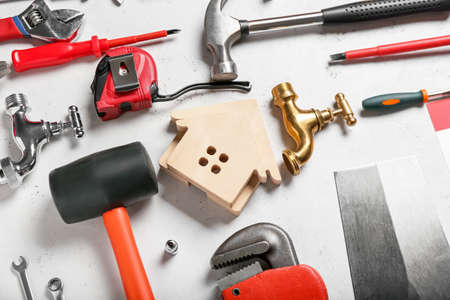1. What Is a Home Inspection Report?
When youre buying a home, one of the most important steps in the process is getting a home inspection—and the result of that inspection is the home inspection report. This document gives you a detailed picture of the propertys condition and helps you make informed decisions before closing the deal.
What’s Included in a Home Inspection Report?
A home inspection report typically covers the major systems and components of a house. The inspector examines both the interior and exterior of the property to identify any existing or potential issues. Heres a breakdown of common areas covered:
| Category | What’s Inspected |
|---|---|
| Roof | Shingles, flashing, gutters, and signs of leaks or damage |
| Foundation & Structure | Basement, crawl spaces, visible cracks, water intrusion |
| Electrical System | Main panel, outlets, wiring, circuit breakers |
| Plumbing System | Pipes, drains, water heater, fixtures, leaks |
| HVAC System | Heating and cooling units, ductwork, thermostat function |
| Kitchens & Bathrooms | Sinks, toilets, bathtubs/showers, cabinets, ventilation |
| Around the House | Doors, windows, insulation, flooring, walls & ceilings |
Why Does It Matter?
The home inspection report matters because it protects you from buying a property with hidden problems. It can reveal safety hazards or costly repairs that aren’t obvious during a walkthrough. Based on what’s in the report, you can decide to negotiate repairs with the seller, request a price reduction, or even walk away from the deal if needed.
The Role of the Home Inspector
The inspection is carried out by a licensed home inspector—an unbiased third party who evaluates the home based on current building standards and professional guidelines. They don’t pass or fail a house; instead, they provide objective findings so you know exactly what youre getting into as a buyer.
A Quick Tip:
You should always attend the inspection if possible. It gives you a chance to ask questions directly and see any issues firsthand rather than just reading about them later in the report.
The Bottom Line (for Now)
A home inspection report is more than just paperwork—its your guide to understanding the true condition of your future home. By knowing what’s inside this report and why it matters, youre already one step closer to making a confident purchase decision.
2. Key Components of the Report
When you receive a home inspection report, it might feel overwhelming at first. But understanding the key components can help you make informed decisions about your potential new home. Most reports follow a similar structure and focus on the major systems that affect a homes safety, function, and long-term value. Below is a breakdown of these critical areas.
Roofing
The roof is one of the most important parts of any home. Inspectors will look at the condition of shingles or tiles, flashing, gutters, downspouts, and any visible signs of leaks or water damage. They’ll also assess the overall age and remaining life expectancy of the roof.
Electrical System
This section covers everything from the main service panel to individual outlets. The inspector checks for outdated wiring (like knob-and-tube), overloaded circuits, grounding issues, and whether GFCI outlets are installed in required areas like kitchens and bathrooms.
Common Electrical Issues Found:
| Issue | What It Means |
|---|---|
| Double-tapped breakers | Two wires connected to a breaker designed for one; can be a fire risk. |
| No GFCI protection | Missing outlets that shut off power when theres a ground fault; needed in wet areas. |
| Aluminum wiring | Older homes may have aluminum wires which can overheat if not properly maintained. |
Plumbing System
The plumbing review focuses on visible pipes, water heaters, fixtures, and water pressure. Inspectors look for signs of leaks, corrosion, or outdated materials like galvanized steel piping that could impact water quality or flow.
HVAC (Heating, Ventilation, and Air Conditioning)
This part includes checking the heating system (furnace or boiler), cooling system (central AC or heat pumps), ductwork, and vents. The inspector tests basic functionality and looks for signs of wear or poor maintenance that could lead to future repairs.
Foundation and Structural Elements
The foundation supports your entire home, so this section is critical. Inspectors will look for cracks in walls or floors, uneven flooring, sticking doors/windows, and moisture issues in crawl spaces or basements—all signs that structural movement may be occurring.
Signs of Potential Foundation Issues:
| Sign | Description |
|---|---|
| Horizontal wall cracks | May suggest pressure against foundation walls from soil movement. |
| Sagging floors | Could indicate deteriorated joists or foundational settling. |
| Damp basement corners | Might be due to poor drainage or hydrostatic pressure against foundation walls. |
Structural Components
This includes framing, beams, joists, trusses, and load-bearing walls. Inspectors will look for wood rot, termite damage, warping, or anything that compromises the integrity of these elements. Its all about making sure the “bones” of the house are solid.
Each section of the report plays an important role in helping you understand what youre really buying—not just how the home looks on the surface. Knowing what these key components mean can help you ask better questions and negotiate repairs before closing the deal.

3. Common Issues Found During Inspections
When reviewing a home inspection report, its important to know which issues are typical and which ones might require serious consideration. Home inspections often reveal a wide range of concerns — from small cosmetic flaws to major structural or safety problems. Understanding what these findings mean can help you make informed decisions before moving forward with your purchase.
Minor Issues: Normal Wear and Tear
Some problems found during inspections are minor and commonly seen in homes of all ages. These usually dont affect the homes safety or function but may still be worth addressing after move-in.
| Issue | What It Means | Potential Fix |
|---|---|---|
| Peeling paint or scuffed walls | Cosmetic wear that doesn’t impact structure | Simple repainting or touch-ups |
| Loose doorknobs or cabinet hinges | Normal usage over time causes loosening | Tightening screws or replacing hardware |
| Worn carpet or flooring scratches | Aesthetic concern, not a functional issue | Replace or refinish as needed |
| Small cracks in drywall | Usually from settling of the home | Patching and repainting |
Moderate Concerns: Functional But Needs Attention
These are issues that might not pose immediate danger but could affect comfort, efficiency, or lead to bigger problems if left unchecked.
| Issue | What It Means | Recommended Action |
|---|---|---|
| Leaky faucets or toilets | Can waste water and increase utility bills | Have a plumber repair or replace faulty parts |
| Old HVAC system (10+ years) | Might be near the end of its lifespan, less energy efficient | Budget for replacement; request service records if available |
| Poor insulation or drafty windows | Affects energy efficiency and comfort levels | Add weatherstripping, upgrade windows, improve insulation |
| Dated electrical panel or wiring (e.g., knob-and-tube) | Might not meet modern code or power needs | Consider an electricians evaluation for upgrades |
Major Red Flags: Safety and Structural Problems
If your home inspection report includes any of these items, take them seriously. These can be costly to fix and may impact your decision to move forward with the purchase.
| Issue | Why It’s Serious | Your Next Steps |
|---|---|---|
| Foundation cracks or shifting walls | Might indicate structural instability that can worsen over time | Get a structural engineer’s assessment before proceeding |
| Mold presence or signs of water damage in basement/attic | Mold can affect health; water issues can signal roof/plumbing problems | Hire mold remediation expert; investigate source of moisture |
| Active roof leaks or damaged shingles/flashing | Can lead to interior damage and expensive repairs if ignored | Request roof inspection; negotiate repairs with seller if possible |
| Termite damage or signs of infestation | Pest damage can compromise wood framing and go unnoticed for years | Pest control specialist should inspect and treat as needed; check for structural repairs required due to damage |
| No GFCI outlets in wet areas (bathrooms/kitchen) | Lack of these safety outlets increases risk of electrical shock near water sources | An electrician should install GFCI outlets where required by code |
The Takeaway for Buyers:
An inspection report is meant to give you a clear picture of the homes condition — not necessarily to scare you off. Knowing the difference between common maintenance issues and real red flags helps you prioritize what needs fixing now, later, or through negotiation with the seller. The more informed you are, the better prepared youll be to protect your investment and enjoy your new home with peace of mind.
4. How to Read and Interpret the Report
Once you receive your home inspection report, it can feel overwhelming at first—filled with technical terms, detailed observations, and plenty of recommendations. But dont worry! Heres how to break it down so you can make smart decisions.
Understand the Technical Jargon
Home inspectors often use industry-specific language that might not be familiar to most buyers. Here are a few common terms and what they really mean:
| Term | What It Means |
|---|---|
| GFCI | Ground Fault Circuit Interrupter – a safety device for electrical outlets, especially near water sources. |
| Flashing | Metal or plastic materials used to prevent water leakage at joints or roof edges. |
| Efflorescence | A white powdery residue on masonry, usually from moisture movement through the wall. |
| Soffit | The underside of a roof overhang – important for attic ventilation. |
| HVAC | Heating, Ventilation, and Air Conditioning system – controls your homes climate. |
Prioritize the Issues Found
The inspection report will typically list dozens of items, but not all are equally important. Focus on these three categories:
1. Safety Concerns
This includes issues like faulty wiring, mold presence, structural damage, or gas leaks. These should be addressed immediately and may impact your decision to move forward with the purchase.
2. Major Repairs or System Failures
This includes things like an aging roof, foundation cracks, or HVAC systems that no longer function properly. These can be expensive fixes and should be considered in your offer or negotiations.
3. Maintenance Items or Cosmetic Flaws
These include things like chipped paint, loose cabinet handles, or minor cracks in drywall. Theyre not urgent and often inexpensive to fix.
Deal-Breakers vs. Negotiable Repairs
Not every issue found in the inspection means you should walk away from the deal. Heres how to tell the difference:
| Deal-Breakers | Negotiable Repairs |
|---|---|
| Mold infestation | Leaky faucet in kitchen |
| Foundation instability | Peeled exterior paint |
| Active roof leaks | Bent window screens |
| Unsafe electrical panel | Missing door stoppers |
If youre unsure whether something is a deal-breaker or not, talk with your real estate agent or even bring in a specialist (like an electrician or roofer) for a second opinion.
Ask Questions and Don’t Be Afraid to Clarify
If something in the report doesn’t make sense, reach out to the inspector directly. Most are happy to explain their findings in plain English. Remember: youre making one of the biggest investments of your life—it’s okay to ask lots of questions!
Create an Action Plan Based on Your Findings
Once youve reviewed and understood the report, work with your agent to decide what repairs you’d like the seller to handle before closing and which ones you’re willing to take on later. Having a clear plan helps keep negotiations focused and productive.
The key is knowing what really matters—and what can wait—so you can move forward with confidence.
5. What to Do After Receiving the Report
Once you receive your home inspection report, it’s time to take action. Don’t worry if the report looks long or technical — that’s completely normal. The key is to focus on what matters most and make informed decisions based on the findings.
Review the Report Carefully
Start by going through each section of the report. Highlight any major issues like structural damage, roofing problems, plumbing leaks, electrical concerns, or HVAC malfunctions. These can be costly repairs and may impact your decision to move forward with the purchase.
Tip:
It’s okay if you don’t understand all the technical terms — ask your real estate agent or inspector for clarification.
Decide Your Next Steps
Based on what the inspection reveals, you generally have three options:
| Option | Description | When to Consider |
|---|---|---|
| Request Repairs | You can ask the seller to fix certain issues before closing. | If there are safety concerns or costly repairs like a broken furnace or roof damage. |
| Renegotiate Offer | You might ask for a lower price or a credit at closing to cover repair costs. | If youre willing to handle repairs yourself but want compensation. |
| Walk Away | You can back out of the deal if the problems are too serious or expensive. | If the home has major structural issues or fails to meet your expectations even after negotiation. |
How to Make Repair Requests
Your real estate agent will help you submit a formal request for repairs. Be specific about what you want fixed and consider attaching portions of the inspection report for reference. Focus on health and safety issues rather than cosmetic flaws.
Stay Within Contingency Deadlines
Most purchase agreements include an inspection contingency period — usually 7–10 days. Make sure all negotiations and decisions happen within this timeframe, or you could lose your chance to act on the findings.
Pro Tip:
Keep communication with your agent and lender open during this process so everyone stays on track for closing.
6. Working with Your Agent and Inspector
When buying a home, your real estate agent and home inspector are two of your most important allies. Knowing how to work with them effectively can help you understand the home inspection report clearly, make informed decisions, and ultimately protect your investment.
Why Communication Matters
Clear and open communication ensures everyone is on the same page. Your agent helps you navigate negotiations, while the inspector provides detailed insight into the condition of the property. Together, they help you assess risks and opportunities based on the inspection findings.
Tips for Communicating with Your Real Estate Agent
- Be Honest About Concerns: Let your agent know if something in the report worries you. They can help you prioritize issues and decide what to negotiate.
- Ask Questions: If youre confused about any part of the process or report, don’t hesitate to ask. A good agent will explain everything in simple terms.
- Stay Involved: Attend the inspection if possible. This helps you see issues firsthand and have better discussions afterward with your agent.
Working Effectively with Your Home Inspector
- Be Present During the Inspection: This gives you a chance to ask questions in real-time and get explanations directly from the inspector.
- Request Clarification: If a term or issue in the report is unclear, ask the inspector to explain it in plain language.
- Use Their Expertise: Ask for their opinion on which issues are urgent vs. cosmetic. This helps you focus on what really matters.
What to Discuss After Receiving the Report
| Topic | Who to Talk To | Purpose |
|---|---|---|
| Major Structural Issues | Inspector & Agent | Understand severity and discuss repair options or walk-away scenarios |
| Safety Concerns (e.g., electrical, mold) | Inspector & Agent | Evaluate immediate risks and need for professional remediation |
| Repair Estimates | Agent | Negotiate seller credits or repairs before closing |
| Future Maintenance Needs | Inspector | Create a plan for long-term upkeep after purchase |
Your Role as a Buyer
You don’t need to be an expert—but staying engaged, asking questions, and leaning on your agent and inspector’s expertise will go a long way. The more informed you are, the more confident youll feel moving forward with your purchase decision.
A successful home purchase isn’t just about finding a house you love—it’s about making sure that house is safe, sound, and worth your investment. By working closely with your agent and inspector, you’re setting yourself up for long-term peace of mind.


